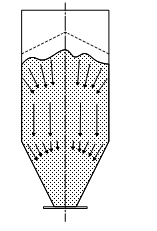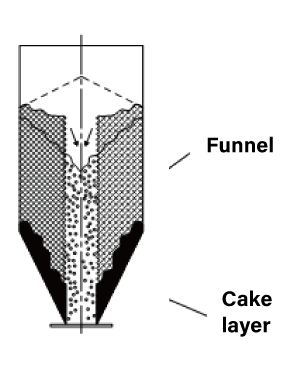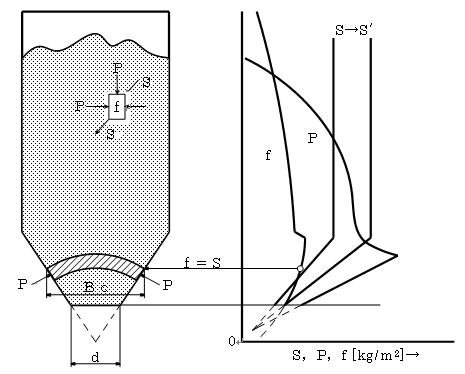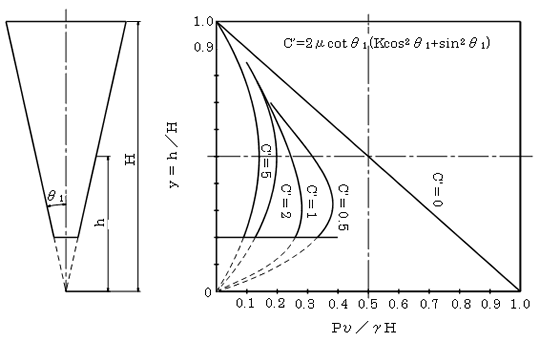Problems in Storage Tank
Flow patterns in a storage tank are roughly divided into "mass flow" and "funnel flow" as shown in the figure below.
If mass flow occurs in all storage tanks, the equipment and devices for ejection enhancement become useless.
However, a large number of "funnel flow" tanks are present, many of which are equipped with auxiliary means of ejection enhancement.

(a)Mass flow

(b)Funnel flow
Next, the arching phenomenon that occurs in the storage tank is briefly described.
In Fig. 2 below, f is the strength of powder compressed by powder pressure, while S is the shearing force generated under the storage tank conditions (wall friction coefficient, cone angle).
If f < S, the powder is not compressed and is ejected, but if f > S, the powder is compressed, causing blockage.
The point where f = S is an equilibrium point called the blockage limit diameter.
In order to prevent arching, it is better to increase the outlet diameter of the storage tank to greater than the blockage limit diameter. Because of various factors, however, there are few storage tanks that meet this condition.
Note that blockage is likely to occur at a local maximum point of powder pressure, where y=h/H (shown in Fig. 3) is approximately 0.3 to 0.4, and that it is necessary to prevent powder compression at that point.

Compression arch and arch diameter in hopper
Fig. 2

Powder pressure distribution in inverted cone hopper
Fig. 3